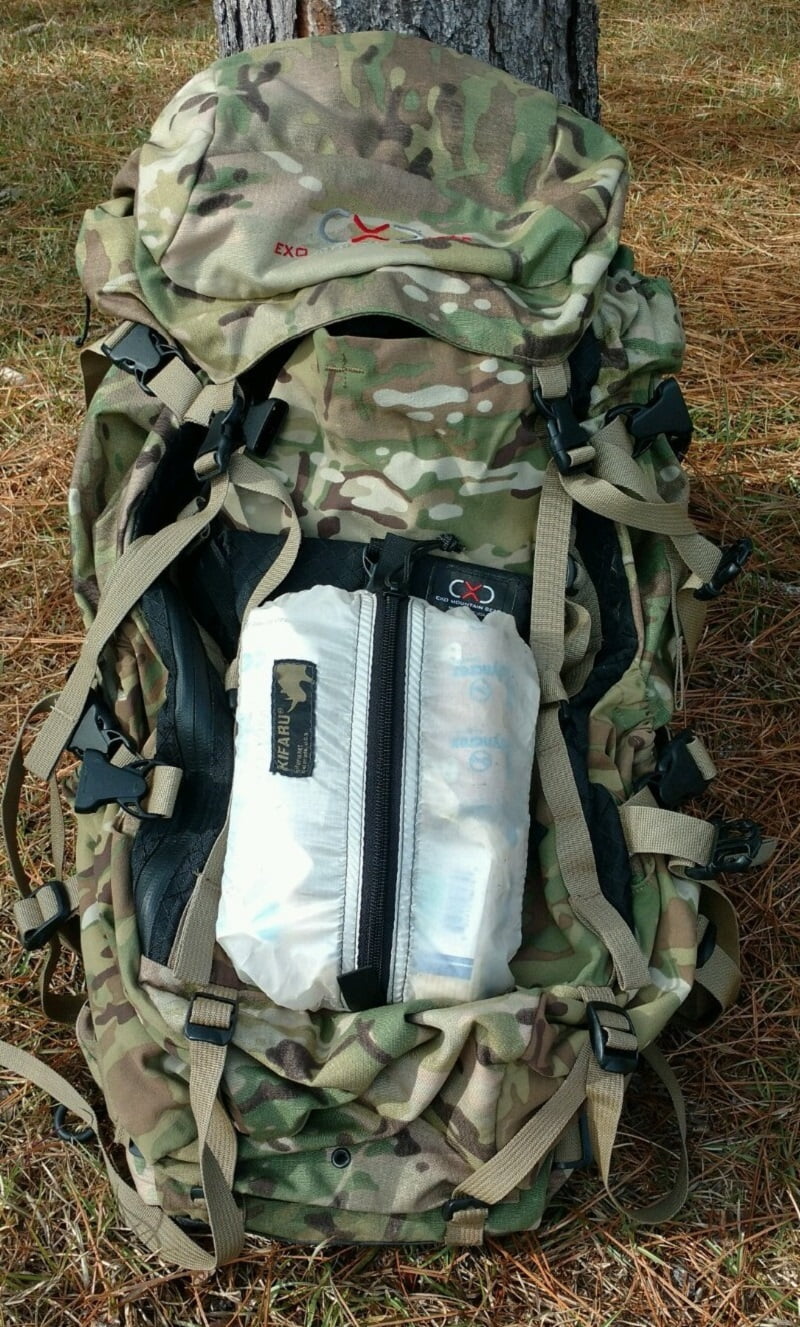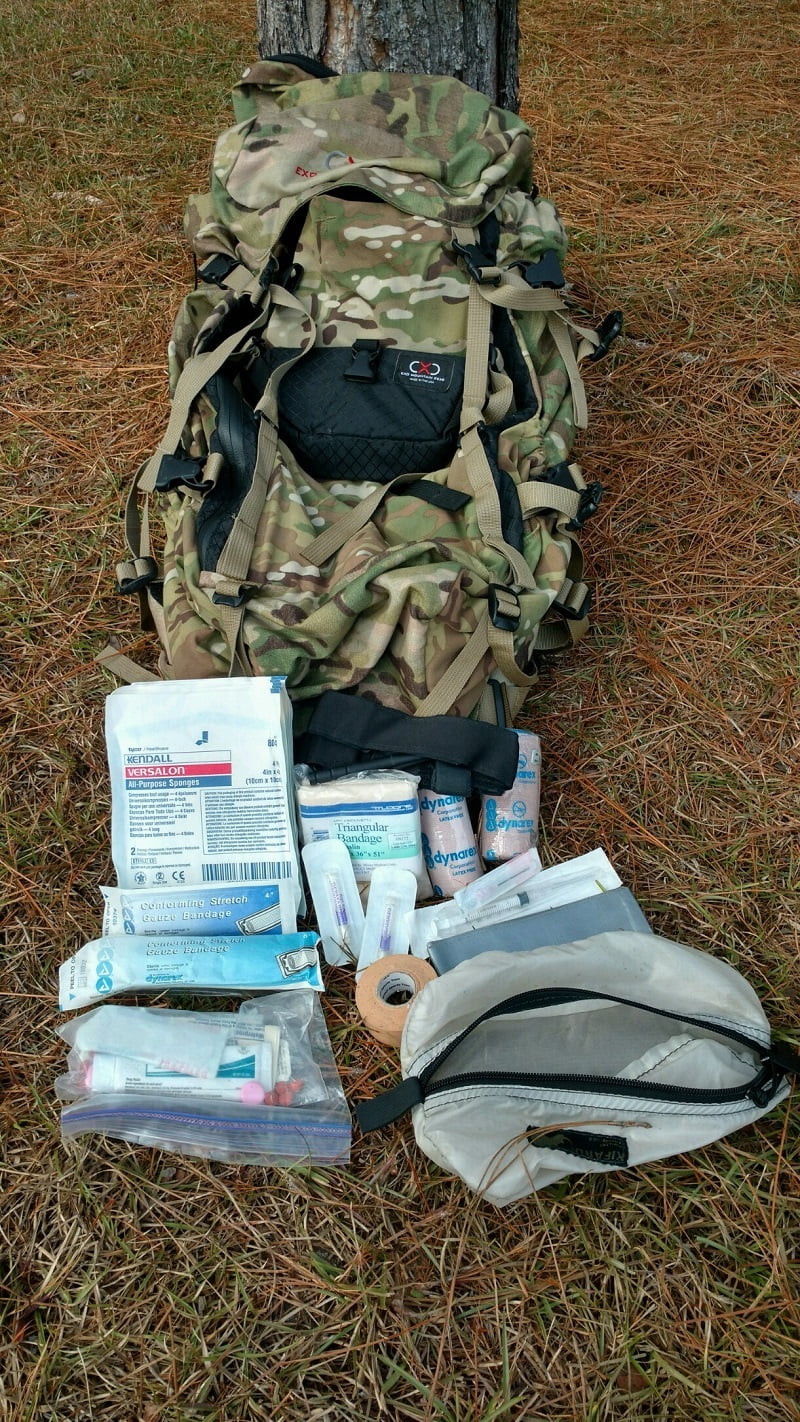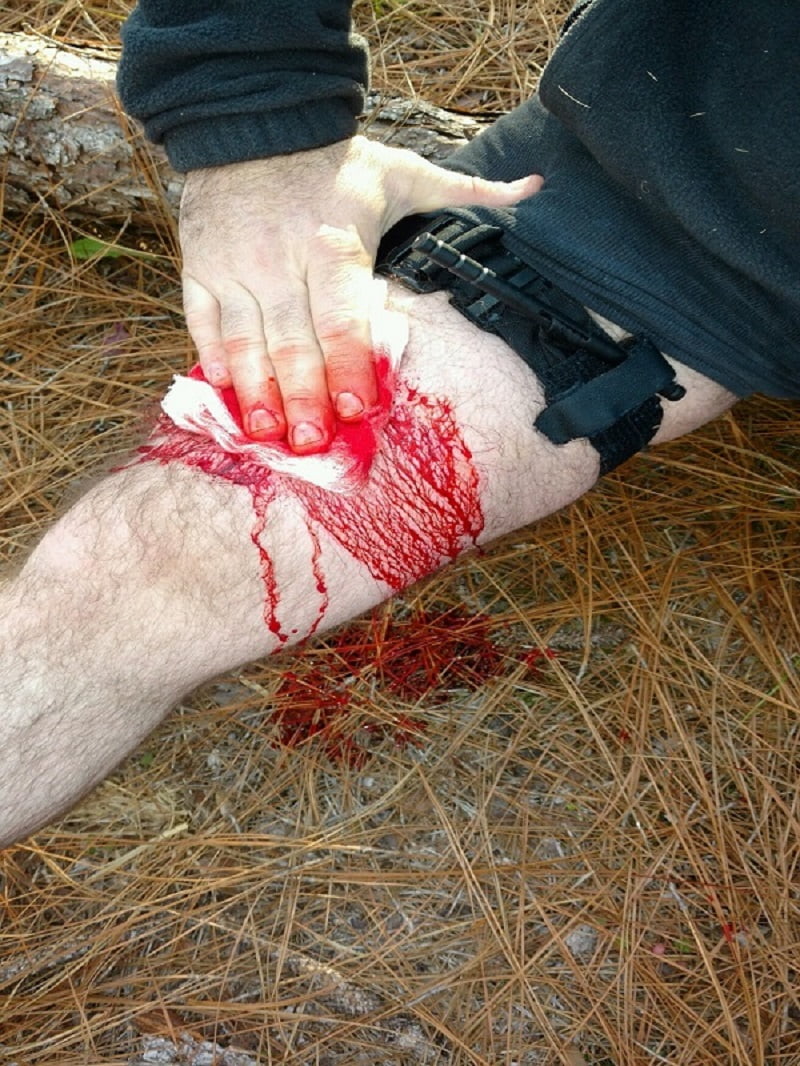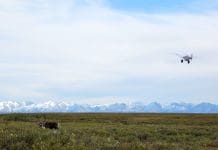BackCountry First-Aid Kit
By Richard Rhodes, Guest Contributor
I remember a call I had many years ago, it was for a man bleeding from his leg and he was not able to stop the bleeding, the caller was frantic and our dispatchers were having a hard time trying to pinpoint the location of the caller. We started our response in the general direction of the caller and eventually were able to locate the patient in a hunting camp a couple miles off the main road and 17 minutes from our headquarters!! Thankfully our patient had been able to place enough pressure to control the bleeding until we arrived and placed a tourniquet to stop the bleeding.
Our patient had been practicing with his bow and his arrow had penetrated the target, instead of pulling it out he had gone around the target and pulled it towards himself, the arrow had come free and the broadhead had penetrated his leg mid-thigh and lacerated his femoral artery. This patient could have easily bled out within a few minutes of this injury, imagine if this sort of injury occurred in the backcountry and you are 5-6 hours from your truck or from help getting to you, the outcome could be detrimental. Having some basic knowledge of how to manage injury or illness, the necessary items to assist you in treating them and having a means of communication to get help when you need it could be the difference in saving your life or limb.
So, you want a functional backcountry first aid kit? Now that you have made that decision you have two options to choose from. You can purchase a pre-made kit or you can design your own. The benefit to buying a ready-made kit is that once you buy it and throw it into your pack you’re done, but that’s also a problem. You need to understand how and when to use the items in your kit. By designing and building your own kit you have a good knowledge of what’s in there and what it’s uses are.
If you choose to purchase a pre-made kit you can find some good ones from reputable companies that will suffice for your anticipated needs, but the issues with these kits are that you are paying for convenience, packaging, and often a brand name. If you choose to go this route, I really like the kits from Adventure Medical Kits, you can find their basic kits such as this one Adventure Medical Kit at most any large chain store such as Academy, Bass Pro, Cabela’s, REI etc. Specifically, I like the NOLS Medical kit 2.0 This kit has most of the basics that you need to find when purchasing a ready-made kit. Additionally, you can add on the NOLS Wilderness Medicine Book to expand your knowledge base on how to treat potential illness and injury.
So, how do you strike the balance between breaking the bank and building your own kit tailored to meet your needs?
To decide whether to build your own kit or to buy a pre-made one, you first have to get an idea of what you’re wanting in a kit and go from that starting point. Some guys carry way too many medical supplies for every possible contingency and don’t even have the slightest clue on how to use them. Others don’t even carry enough to mitigate the simplest of issues—striking a balance is key.
I have been a firefighter for 15 years and a Paramedic for 10. Personally, I prefer to carry a decent kit that I think will suffice to get me by until help can get there. The one thing I will tell you is to plan for the most likely situation and learn to improvise a couple of things if needed. There is absolutely no point in taking an item you don’t know how to use. Additionally, a hunter in Arizona is going to need a different set of supplies than a guy hunting Alaska; knowing and preparing for your hunting location is important.

My backcountry First Aid
Below I will list the items found in my kit (with a focus on prevention.)
- 800mg Tylenol/Motrin- Per day
- 4 Anti-Diarrheal
- 4 Benadryl
- 4 Anti-Acid
- 4 bandaid
- Triple antibiotic ointment
- 4 alcohol prep pads
- 1 package of moleskin (your usage may vary)
- 1 4” Ace Wrap
- 1 2” Ace Wrap
- 10 4×4 gauze pads
- 2 4” rolled gauze
- 2 Triangular bandage
- 1 CAT tourniquet
Or
- 1 Israeli bandage
- 1 Syringe and needle for irrigation
My kit as described above easily fits into the small Kifaru stuff sack and weighs 14.8 oz.
For purchasing of these items and many more, you can visit The EMSstore for many supplies and great pricing.

This is a barebones necessity kit that I feel confident would suffice through most any situation I am forced to encounter. There are several contingencies that are possible, but I just don’t feel the odds of them occurring are worth trying to prepare for. If a situation is that dire, a couple pieces of medical devices will not resolve the issue. Preparation in designing your kit, packaging it to be readily accessible if needed, and preparing for common potential problems will aid you greatly in your quest for a proper medical kit.
Some of the top skills you should learn are proper control of bleeding. Choose your tourniquet and find some videos on its use, such as this one CAT TQ placement, or the Israeli Bandage learn to pack a wound full of gauze to stop bleeding inside an open wound as depicted here Wound packing. How to splint a broken arm or leg using sticks or arrows and the gauze and Israeli bandages from your kit are just a few of the skills that would help you in the event a high-stress situation happened.
Communications is also an often-overlooked addition to a proper first aid kit. Having the ability to notify the proper people in the event of an emergency arising is paramount to most things that we can do in the backcountry (or you could do what my partner did and find a paramedic to hunt with.)
Use this article as a guideline when making a decision on how you’ll best prepare for the situations you’re most likely to encounter in the great outdoors.
You can ask Richard questions or discuss this article here.
 Richard is an avid outdoorsman who began hunting as a kid in Southern Georgia, where he grew up pursuing Whitetail, Turkeys, and Ducks, he has now begun to pursue Elk hunting in the Rockies on a yearly basis. Richard began his career in Public Safety with the Fire Department in 2002, he has since obtained the rank of Training Officer and Fire Instructor. Richard completed EMT school in 2007 and Paramedic in 2010, he is currently an EMS/Paramedic instructor at a local college in Georgia and is completing a Bachelors in EMS. Richard has been teaching for the Boy Scouts for several years and frequently teaches Wilderness First Aid.
Richard is an avid outdoorsman who began hunting as a kid in Southern Georgia, where he grew up pursuing Whitetail, Turkeys, and Ducks, he has now begun to pursue Elk hunting in the Rockies on a yearly basis. Richard began his career in Public Safety with the Fire Department in 2002, he has since obtained the rank of Training Officer and Fire Instructor. Richard completed EMT school in 2007 and Paramedic in 2010, he is currently an EMS/Paramedic instructor at a local college in Georgia and is completing a Bachelors in EMS. Richard has been teaching for the Boy Scouts for several years and frequently teaches Wilderness First Aid.





















